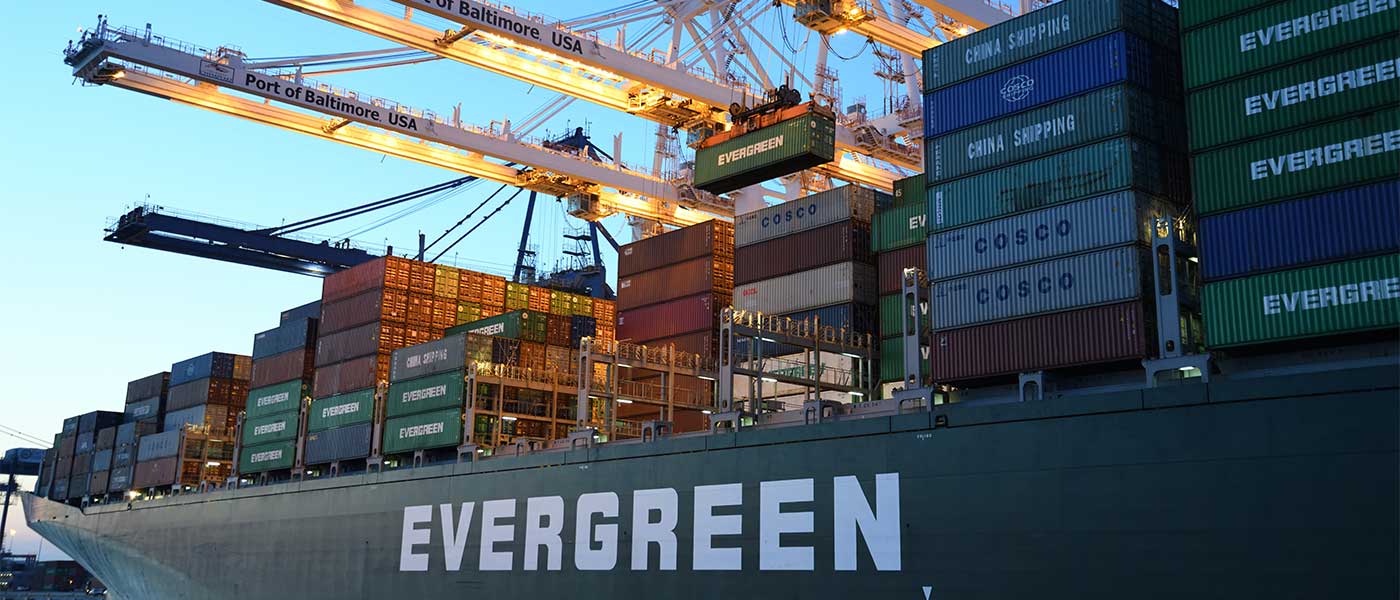E-commerce is on the rise in the Philippines, with a growing number of consumers turning to online shopping for convenience and accessibility. In 2021, the Philippines e-commerce market sales reached $17 billion, largely contributed by 73 million online active users. This is estimated to reach $24 billion, with 17% growth through 2025. This growth can be attributed to various factors, including increasing internet penetration, the rise of the middle class, and government support for digital transformation.
The Philippine e-commerce market is a promising destination for businesses looking to expand in Southeast Asia. With a population of over 113 million, the country presents a vast consumer base, and the growing popularity of online shopping makes it an attractive market for e-commerce ventures. However, despite its potential, the Philippine e-commerce market also presents several challenges, such as the high cost of logistics, low credit card penetration, and the need for market localisation.
In this article, we will provide a comprehensive overview of the current state of the Philippine e-commerce market, its future prospects, and strategies for businesses to succeed in this dynamic landscape. We will examine key statistics, market trends, consumer behaviour, and e-commerce businesses’ challenges. Whether you are a business owner looking to expand to the Philippines or simply interested in the e-commerce landscape in Southeast Asia, this article will provide valuable insights and practical tips for navigating the Philippine e-commerce market.
Current State of Philippine E-Commerce (As of 2024)
The Philippine e-commerce market is growing rapidly and presents a promising business opportunity. Here are some key statistics and insights to give you a better understanding of the current state of the market:
![Philippine E-Commerce Outlook for 2024 and Future: Key Statistics and Future Trends [+Infographics] 1 Current State of Philippine E-Commerce (As of 2023)](https://golocad.com/wp-content/uploads/2023/06/REVISED-Current-State-of-Philippine-E-Commerce-As-of-2023.webp)
- The e-commerce market value in the Philippines was valued at 1.1 billion U.S. dollars in 2015 and was estimated to reach three billion U.S. dollars by 2020.
- The Philippines’ e-commerce market size was valued at 12 billion U.S. dollars in 2021. It was forecasted to reach 22 billion U.S. dollars in 2025.
- There are 43.31 million consumer goods e-commerce users in the Philippines, and they spend a total of around 16.79 billion USD dollars in 2021. That makes a per capita spending on consumer goods e-commerce of around 388 USD. Also, of those e-commerce users, about 31.8% of them purchase through their mobile phones.
- Revenue in the e-commerce market is projected to reach US$18.16bn in 2023. Revenue is expected to show an annual growth rate (CAGR 2023-2027) of 12.93%, resulting in a projected market volume of US$29.54bn by 2027.
- The Philippines has the second-highest e-commerce growth rate in Southeast Asia.
- The Philippines has 73 million online active users.
- The Philippines has a mobile penetration rate of 67%.
- The Philippines has a social media penetration rate of 67%.
- The Philippines has an internet penetration rate of 67%.
- The Philippines has a digital buyer penetration rate of 47.8%.
- The most popular e-commerce platforms in the Philippines are Shopee, Lazada, and Zalora.
- Convenience and cost: Filipinos always look for fast and efficient time-saving solutions. 56% of Filipino consumers reported looking for efficient delivery or payment collection services when buying online. Also, Filipino consumers want value for their money.
- Cash on delivery (COD) remains the most popular payment method among Filipino consumers, with around 71% of e-commerce transactions conducted through COD. However, the popularity of digital payments is growing, with options such as credit cards, e-wallets, and online banking gaining traction among consumers.
- Key challenges faced by e-commerce businesses:
- High logistics costs
- Limited payment options and
- The need for market localisation
These are some of the key challenges e-commerce businesses face in the Philippines. Additionally, competition is fierce, with both local and international players vying for a slice of the market share.
Despite these challenges, the e-commerce market in the Philippines is expected to continue to grow rapidly in the coming years, offering businesses new opportunities to reach customers and expand their reach.
In the next section, we will explore key trends and developments that will likely shape the Philippine e-commerce market in the coming years.
Challenges of Expanding Business in the Philippines Market in 2024 [+Infographics]
If you are an e-commerce business owner trying to expand your business in the Philippines, here are some of the…
Factors Driving the Growth of Philippine E-Commerce
The growth of Philippine e-commerce is driven by several key factors. Here are some statistics and insights to help you understand the driving forces behind the industry:
![Philippine E-Commerce Outlook for 2024 and Future: Key Statistics and Future Trends [+Infographics] 3 Driving Factors Behind the Growth of Philippine E-Commerce](https://golocad.com/wp-content/uploads/2023/06/REVISED-Driving-Factors-Behind-the-Growth-of-Philippine-E-Commerce.webp)
- Increase in internet and smartphone penetration
The number of internet users in the Philippines reached 73 million in 2021, with a penetration rate of 67%. This growth is expected to continue in the coming years, with the number of internet users projected to reach 97 million by 2025.
In addition, the number of smartphone users in the country is expected to grow from 60 million in 2021 to 80 million by 2025. This increase in internet and smartphone penetration provides a large potential customer base for e-commerce businesses.
- Growth of the middle class
The growth of the middle class in the Philippines has been a driving force behind the growth of the e-commerce industry.
In 2021, the middle class accounted for 44% of the population and is projected to grow to 47% by 2025. This growth in the middle class is expected to result in increased disposable income, which in turn can be spent on online shopping.
- Government initiatives and support
The Philippine government has implemented several initiatives to support the growth of e-commerce in the country.
In 2020, the government signed the Innovative Startup Act, which aims to provide financial and non-financial support to startups and small and medium-sized enterprises (SMEs).
Additionally, the government has launched programs to support the development of e-commerce infrastructure and promote the adoption of e-commerce among SMEs.
- Shift towards digital payments
Cash on delivery (COD) has traditionally been the most popular payment method among Filipino consumers, with around 7 in 10 Pinoys paying e-commerce transactions through COD.
However, there has been a recent shift towards digital payments, with options like credit cards, e-wallets, and online banking gaining consumer traction. This shift towards digital payments is expected to continue, driven by factors such as convenience and security.
Overall, these factors are expected to continue driving the growth of the Philippine e-commerce industry in the coming years, providing a promising opportunity for businesses to expand their online presence and reach a wider customer base.
How to Import to the Philippines
Want to import products for your e-commerce business in the Philippines? Read this blog for insightful information about importing to…
Future Trends in Philippine E-Commerce
The Philippine e-commerce market is expected to continue its growth trajectory, with several emerging trends shaping the industry. According to data from the Philippine Department of Trade and Industry (DTI), E-commerce increased the nation’s GDP by 3.4%, or USD 12 billion, in 2020. The DTI wants E-commerce businesses to grow from 500,000 in 2020 to 750,000 by 2021 and 1 million by 2022.
Also, according to Statista Market Forecast, the revenue in the e-commerce market in the Philippines is projected to reach US$18.16bn in 2023. The revenue is expected to show an annual growth rate (CAGR 2023-2027) of 12.93%, resulting in a projected market volume of US$29.54bn by 2027.
Our team of e-commerce experts at Locad researched and came up with some findings on the future of e-commerce in the Philippines. Here are some key trends and predictions in Philippine e-commerce to look out for:
![Philippine E-Commerce Outlook for 2024 and Future: Key Statistics and Future Trends [+Infographics] 5 Future Trends in Philippine E-Commerce](https://golocad.com/wp-content/uploads/2023/06/REVISED-Future-Trends-in-Philippine-E-Commerce.webp)
- Mobile and social commerce will dominate
Mobile commerce is set to become the dominant form of e-commerce in the Philippines, with an estimated 63% of the population using smartphones by 2025. This growth is expected to fuel the rise of social commerce, which involves selling products directly through social media platforms. This trend is already being seen on platforms like TikTok, Facebook and Instagram, where businesses can set up shops to sell products to their followers. Brands that can effectively harness mobile and social commerce will be well-positioned for success.
- Emerging technologies will disrupt the market
Technologies such as AI, AR, and VR are set to play a bigger role in the e-commerce landscape in the Philippines. For example, AI-powered chatbots are already used to enhance customer service in e-commerce businesses.
AR and VR can also provide more immersive product experiences for customers. As these technologies become more widespread and affordable, they will likely disrupt the e-commerce market and change how businesses operate.
- Sustainability and ethical practices will be a key focus
As consumers become more environmentally and socially conscious, sustainability and ethical practices will become a key differentiators for e-commerce businesses.
Brands that can demonstrate their commitment to these issues through their operations and supply chain will be more attractive to consumers. This trend is already seen in the rise of eco-friendly and ethical fashion brands in the Philippines.
- Cross-border e-commerce will expand
The growth of the ASEAN market is expected to drive cross-border e-commerce in the Philippines. This presents an opportunity for local businesses to expand their reach beyond the domestic market and tap into the growing demand from neighbouring countries.
Cross-border e-commerce will require businesses to adapt to different regulations and consumer preferences, but those that can successfully navigate these challenges will have a significant advantage.
- Growing adoption of omnichannel strategies
With consumers increasingly using multiple channels to make purchases, businesses are turning to omnichannel e-commerce strategies to provide a seamless shopping experience. In the Philippines, businesses will likely adopt omnichannel strategies combining physical and digital retail benefits, such as offering in-store pick-up for online purchases or using social media channels to drive sales.
- Increased investment in logistics infrastructure
Logistics remains a major challenge for e-commerce businesses in the Philippines, with high costs and a lack of reliable infrastructure hindering growth. To address this, there will likely be increased investment in logistics infrastructure, including developing more fulfillment centres, last-mile delivery solutions, and cross-border logistics networks.
In conclusion, the future of e-commerce in the Philippines looks bright, with several emerging trends shaping the industry. E-commerce businesses that adapt to these trends and focus on providing innovative, convenient, and ethical shopping experiences will likely thrive in the coming years.
Guide for Lazada Sellers who Ship to the Philippines
Learn how to ship to the Philippines as a Lazada seller…
How to succeed in the Philippine e-commerce market?
With the rapidly growing Philippine e-commerce market, businesses need a strategy to succeed in this competitive landscape. Here are some key factors to consider:
- Understanding the local market and consumer preferences
Understanding the local market and consumer preferences is crucial to creating a successful e-commerce business in the Philippines. This involves knowing what products and services are in demand and the cultural nuances that impact consumer behaviour. According to Statista, the most popular e-commerce categories in the Philippines are electronics and media, fashion and toys, hobby, and DIY.
- Leveraging popular e-commerce platforms
Leveraging popular e-commerce platforms such as Shopee, Lazada, and Zalora is essential to reach a wider audience. These platforms have a significant presence in the Philippines and can provide businesses with a ready-made customer base.
- Building a strong brand and reputation
Building a strong brand and reputation is crucial to establish trust with consumers. This involves investing in marketing and advertising, providing high-quality customer service, and maintaining a strong online presence through social media and other digital channels.
- Establishing partnerships with local businesses and influencers
Establishing partnerships with local businesses and influencers can help businesses tap into the local market and reach a wider audience. This involves building relationships with relevant businesses and influencers and collaborating on marketing and promotional activities.
Additionally, partnering with a logistics and fulfillment provider such as Locad can help you streamline your operations and improve delivery times, leading to a better customer experience.
- Adapting to emerging trends and technologies
Lastly, adapting to emerging trends and technologies is crucial to stay ahead of the competition. This involves keeping up-to-date with the latest developments in the e-commerce industry, such as the shift towards mobile and social commerce, and investing in new technologies like AI, AR, and VR.
Following these tips can increase your chances of success in the Philippine e-commerce market.
TL;DR: Key Takeaways for Success in the Philippine E-Commerce Market
Here’s a quick summary of what we covered in this article on the growth and future of e-commerce in the Philippines:
- The Philippine e-commerce market is rapidly growing and expected to reach a market volume of US$29.54bn by 2027.
- Factors driving this growth include increased internet and smartphone penetration, the growth of the middle class, government initiatives and support, and a shift towards digital payments.
- Future trends in Philippine e-commerce include a continued focus on mobile and social commerce, emerging technologies like AI and VR, a greater emphasis on sustainability and ethical practices, and increased cross-border e-commerce.
- To succeed in the Philippine e-commerce market, businesses should focus on understanding the local market and consumer preferences, leverage popular e-commerce platforms, build a strong brand and reputation, establish partnerships with local businesses and influencers, and adapt to emerging trends and technologies.
- Partnering with a logistics and fulfillment provider can also be crucial to success in the Philippine e-commerce market.
Overall, the Philippine e-commerce market presents many opportunities for businesses willing to adapt and innovate to meet consumers’ changing needs and preferences.
Popular Digital Payments Platforms In The Philippines
The following are some of the most popular digital payments platforms in the Philippines:
GCash: GCash is a mobile wallet and digital payments platform that is owned and operated by Globe Telecom, one of the largest telecommunications companies in the Philippines. GCash can be used to make payments to merchants, send and receive money from other GCash users, and pay for bills and utilities.
PayMaya: PayMaya is a mobile wallet and digital payments platform that is owned and operated by Maya Financial, a digital financial services company. PayMaya can be used to make payments to merchants, send and receive money from other PayMaya users, and pay for bills and utilities.
Alipay: Alipay is a mobile wallet and digital payments platform that is owned and operated by Ant Group, a Chinese fintech company. Alipay is one of the most popular digital payments platforms in the world, and it is also widely used in the Philippines.
PayPal: PayPal is a global online payments system that allows users to send and receive money online. PayPal is also widely used in the Philippines.
Visa Checkout: Visa Checkout is a digital payments platform that allows users to make payments to merchants online using their Visa credit or debit cards. Visa Checkout is also widely used in the Philippines.
Wrapping Up
The Philippine e-commerce market presents a wealth of opportunities for businesses looking to expand their reach and tap into a growing consumer base. With the increasing internet and smartphone penetration, the shift towards digital payments, and government support, the market is expected to continue its growth trajectory.
To succeed in the Philippine e-commerce market, businesses must understand the local market and consumer preferences, leverage popular e-commerce platforms, build a strong brand and reputation, establish partnerships with local businesses and influencers, adapt to emerging trends and technologies, and partner with a reliable logistics and fulfillment provider.
By keeping these factors in mind and continually adapting to the industry’s changing landscape, businesses can take advantage of the growth potential in the Philippine e-commerce market and establish themselves as key players in the industry.
FAQ
What are the most popular e-commerce platforms in the Philippines?
The most popular e-commerce platforms in the Philippines are Lazada, Shopee, and Zalora. These platforms account for the majority of e-commerce sales in the country.
How can I establish a strong brand and reputation in the Philippine e-commerce market?
Building a strong brand and reputation in the Philippine e-commerce market involves several strategies, including providing quality products and services, offering competitive pricing, ensuring excellent customer service, and leveraging social media and influencer marketing.
What are the major challenges facing e-commerce businesses in the Philippines?
Some major challenges facing e-commerce businesses in the Philippines include poor logistics infrastructure, low consumer trust in online transactions, and limited access to financing for small businesses.
How can I succeed in the Philippine e-commerce market as a small business?
To succeed in the Philippine e-commerce market as a small business, it is important to understand the local market and consumer preferences, leverage popular e-commerce platforms, build a strong brand and reputation, establish partnerships with local businesses and influencers, and adapt to emerging trends and technologies.
What are some future trends to watch out for in the Philippine e-commerce market?
Future trends to watch out for in the Philippine e-commerce market include continued growth in mobile and social commerce, the emergence of new technologies such as AI, AR, and VR, a focus on sustainability and ethical practices in e-commerce operations, and an increase in cross-border e-commerce driven by the growth of the ASEAN market.
![Philippine E-Commerce Outlook for 2024 and Future: Key Statistics and Future Trends [+Infographics] 2 Philippine E-Commerce Outlook for 2024 and Future: Key Statistics and Future Trends [+Infographics]](https://golocad.com/wp-content/uploads/2022/10/philippines-market.webp)
![Philippine E-Commerce Outlook for 2024 and Future: Key Statistics and Future Trends [+Infographics] 4 Philippine E-Commerce Outlook for 2024 and Future: Key Statistics and Future Trends [+Infographics]](https://golocad.com/wp-content/uploads/2022/10/import-philippines.webp)
![Philippine E-Commerce Outlook for 2024 and Future: Key Statistics and Future Trends [+Infographics] 6 Philippine E-Commerce Outlook for 2024 and Future: Key Statistics and Future Trends [+Infographics]](https://golocad.com/wp-content/uploads/2022/10/Shipping-containers.webp)











